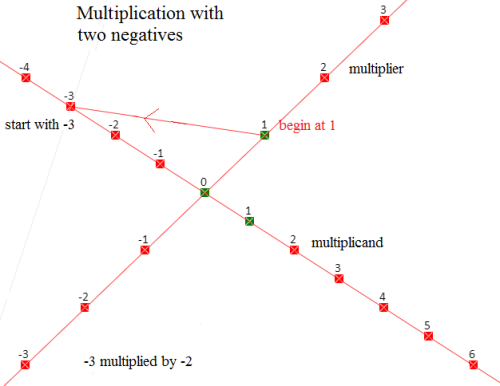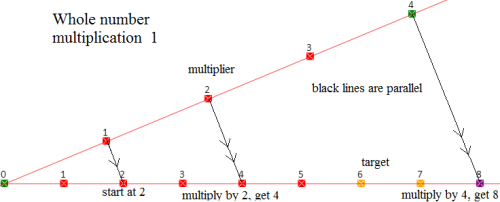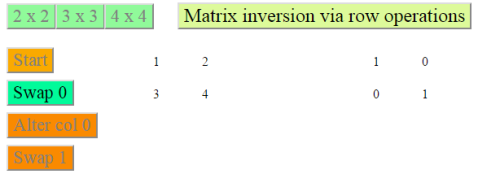What exactly are negative numbers?
A reference , from Wikipedia:
In A.D. 1759, Francis Maseres, an English mathematician, wrote that negative numbers “darken the very whole doctrines of the equations and make dark of the things which are in their nature excessively obvious and simple”.
He came to the conclusion that negative numbers were nonsensical.[25]
A minus times a minus is a plus
Two minuses make a plus
Dividing by a negative, especially a negative fraction !!!!
(10 – 2) x (7 – 3) = 10 x 7 – 2 x 7 + 10 x -3 + 2 x 3, really? How do we know?
Or we use “the area model”, or some hand waving with the number line.
It’s time for some clear thinking about this stuff.
Mathematically speaking, the only place that requires troublesome calculations with negative numbers is in algebra, either in evaluation or in rearrangement, but what about the real world ?
Where in the real world does one encounter negative x negative ?
I found two situations, in electricity and in mechanics:
1: “volts x amps = watts”, as it it popularly remembered really means “voltage drop x current flowing = power”
It is sensible to choose a measurement system (scale) for each of these so that a current flowing from a higher to a lower potential point is treated as positive, as is the voltage drop.
Part of simple circuit A———–[resistors etc in here]————–B
Choosing point A, at potential a, as the reference, and point B, at potential b, as the “other” point, then the potential drop from A to B is a – b
If b<a then a current flows from A to B, and its value is positive, just as a – b is positive
If b>a then a current flows from B to A, and its value is negative, just as a – b is negative
In each case the formula for power, voltage drop x current flowing = power, must yield an unsigned number, as negative power is a nonsense. Power is an “amount”.
So when dealing with reality minus times minus is plus (in this case nosign at all).
The mechanics example is about the formula “force times distance = work done”
You can fill in the details.
Now let’s do multiplication on the number line, or to be more precise, two number lines:
Draw two number lines, different directions, starting together at the zero. The scales do not have to be the same.
To multiply 2 by three (3 times 2):
1: Draw a line from the 1 on line A to the 2 on line B
2: Draw a line from the 3 on line A parallel to the first line.
3: It meets line B at the point 6
4: Done: 3 times 2 is 6

Number line A holds the multipliers, number line B holds the numbers being multiplied.
To multiply a negative number by a positive number we need a pair of signed number lines, crossing at their zero points.
So to multiply -2 by 3 (3 times -2) we do the same as above, but the number being multiplied is now -2, so 1 on line A is joined to -2 on line B

The diagram below is for -2 times 3. Wow, it ends in the same place.

Finally, and you can see where this is going, we do -2 times -3.
Join the 1 on line A to the -3 on line B, and then the parallel to this line passing through the -2 on line A:

and as hoped for, this line passes through the point 6 on the number line B.
Does this “prove” the general case? Only in the proverbial sense. The reason is that we do not have a proper definition of signed numbers. (There is one).
Incidentally, the numbering on the scales above is very poor. The positive numbers are NOT NOT NOT the same things as the unsigned numbers 1, 1.986, 234.5 etc
Each of them should have a + in front, but mathematicians are Lazy. More on this another day.
Problem for you: Show that (a-b)(c-d) = ac – bc – ad + bd without using anything to do with “negative numbers”
*******************************************
References.
Wikipedia:
Reference direction for current
Since the current in a wire or component can flow in either direction, when a variable I is defined to represent
that current, the direction representing positive current must be specified, usually by an arrow on the circuit
schematic diagram. This is called the reference direction of current I. If the current flows in the opposite
direction, the variable I has a negative value.
Yahoo Answers: Reference direction for potential difference
Best Answer: Potential difference can be negative. It depends on which direction you measure the voltage – e.g.
which way round you connect a voltmeter. (if this is the best answer, I hate to think of what the worst answer is)
********************************************




 Thales’ theorem
Thales’ theorem

 6
6


 Notice that the zero points do not have to be in the same vertical line.
Notice that the zero points do not have to be in the same vertical line.
















